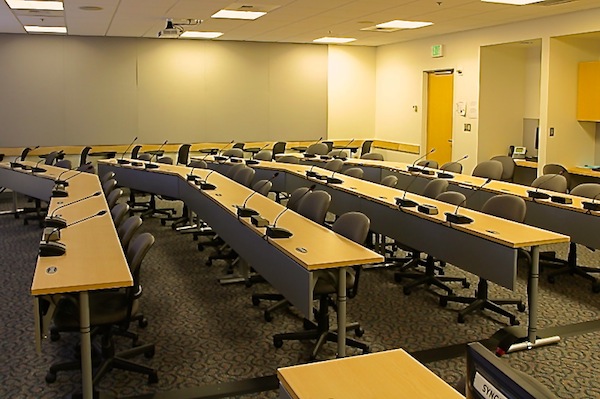Seattle Children's is pushing the boundaries of medical research to find cures for pediatric diseases and improve outcomes for children all over the world. The hospital, which has strategic partners ranging from nearby University of Washington to medical professionals in the Ukraine, is one of the first pediatric hospitals to implement HD videoconferencing over eight years ago.
- As part of a facility upgrade completed in September, Seattle Children’s implemented a Sennheiser Audio Distribution Network (ADN) conferencing system to facilitate audio for both its telehealth and telemedicine services with partners and patients, as well as for its own administrative meetings.
- "We have a team-based care model here where several providers for all different areas and expertise will meet and discuss the best way to treat a patient," says Derrick Lund, audio visual / telemedicine engineer, Seattle Children's. "Our goal was to improve audio communications not only within the conference room so folks could hear each other, but also through remote video conferencing. We connect with other hospitals and other regional clinics on a routine basis so we can discuss and evaluate treatment options."
- The conference room, which features classroom-style seating for about 45 people and is located within the hospital's main campus, has two large projection screens and is often host to several surgeons during a given meeting. Since so many patients depend on their care, time is at a premium — therefore the audio quality is important.
- "We are in a very collaborative field where medical professionals draw from each others' expertise around the country," said Lund. "The audio information is the most important part and the key element in all our meetings." Since installing the Sennheiser ADN system, which consisted of 30 delegate microphones and one microphone for the chairman, Lund says that intelligibility is "vastly improved."
- Lund and his team, who were using a collection of wireless and handheld microphones prior to integrating the ADN solution, assembled and installed it themselves: "We are a fairly small team, but we do all our design, installation and maintenance." While there were many operational benefits, Lund says it was primarily the audio quality that sold him on the new system. "We were shocked at the quality," he said. "We were doing test calls through the videoconferencing system in remote locations just to test the audio. I realized the audio quality was fantastic because I actually forgot we were videoconferencing. It was like we were speaking directly."
- Each conference unit features high-quality Sennheiser KE 10 capsules, and audio is fed to each meeting delegate via high-quality, integrated twin loudspeakers. "In old fashioned systems, you would have a single microphone that picks up the whole room — including a variety of distracting noises. We liked the Sennheiser system because sound comes from each individual and everything is so much clearer," Lund added.
- Currently, the system is set up so four people can talk at a time. When a fifth person comes on, the last person that turned on their mic is automatically muted. Lund says that this has helped the team establish greater control over conversations.
- Another operational benefit Lund appreciates is the red light that illuminates when someone's microphone is activated. "This feature is really helpful for somebody on the other side of a conferencing call, because they are essentially looking at a wall of people," he said. "Instead of looking at everyone's faces and trying to see whose mouth is moving, your eyes are drawn to where the light is. It's a subconscious thing, but we've noticed that conversations happen more quickly."
- The importance of 'audio' in the term 'audiovisual' isn't lost on Lund, who believes that audio is at the very essence of the conversation. "You can deliver so much more information through speaking than you can through visual things like showing a slide or a diagram. For instance, if you are a patient getting an ultrasound, you are not going to really understand what you are looking at unless somebody describes it to you and points out the important things. Without audio information, you are missing most of it therefore it is paramount to get that part right."











